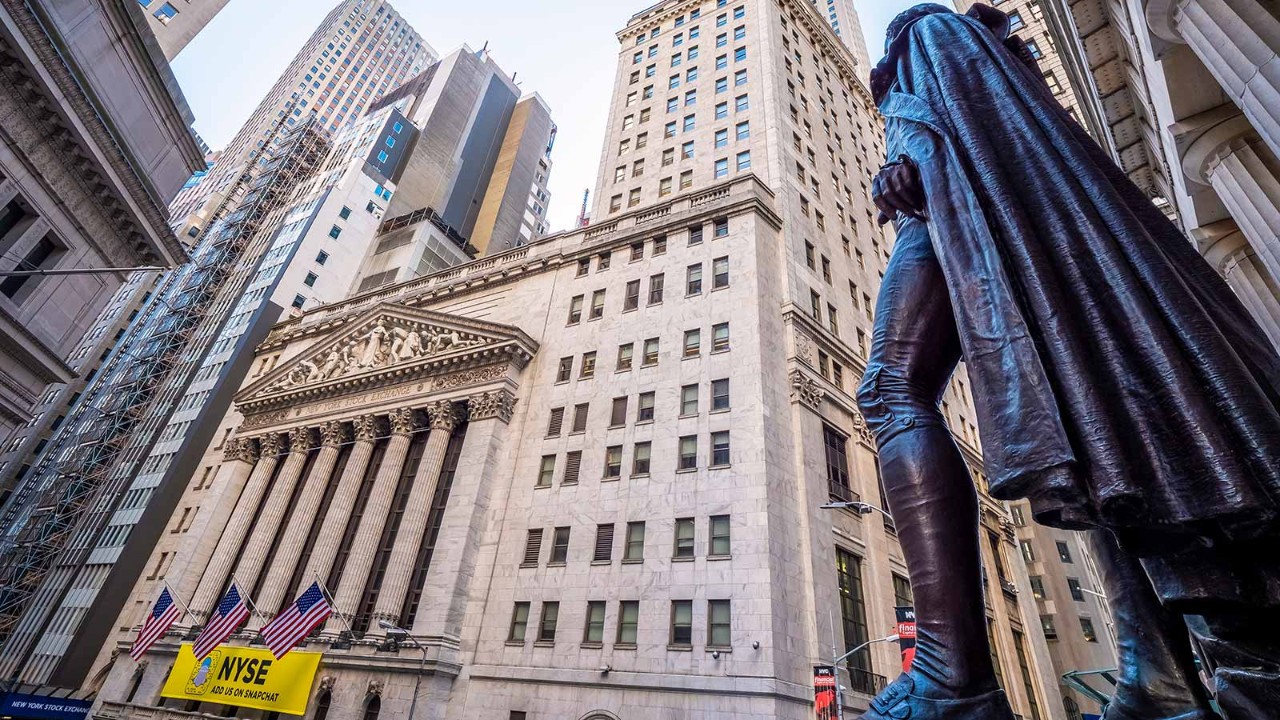
The prospect of interest rate rises from the Federal Reserve typically fills both businesses and investors with dread. After all, monetary tightening is intended to slow credit growth and cool the economy, or as former Federal Reserve chair William McChesney memorably described it, to remove the ‘punch bowl’ just when the party is really warming up.
More than 65 years after McChesney coined this phrase, his distant successors are preparing to seize the booze from America’s economic party.
America’s housing market would thus dodge the bullet of sharply higher mortgage rates
At the turn of the year investors were expecting a leisurely pace of rate rises. Since then, current Fed chair Jerome Powell has expressed growing concern over elevated inflation, which has been both more sustained and broader than expected.
The Fed’s favourite measure of inflation, the Core Personal Consumption Expenditure Index, rose by 4.9% in the year to December, the fastest rate rise since 1983 and more than double the central bank’s 2% target. Powell also hinted that with full employment fast approaching – joblessness at 4% in January 2022 was down from a 2020 peak of 14.7% – the US economy no longer needs the punch bowl.
The upshot is that at the time of writing, early February, markets are now pricing close to six 25 basis point rate rises this year, starting as soon as March – which would be more like a power-walk than a leisurely stroll.
This shift took the momentum out of stock markets at the start of the year. But now the question is how the US economy will cope with higher rates. As befits this publication, the question can be considered from an accounting perspective, by looking at debt financing costs, balance sheet strength, and cashflow. The answers turn out to be relatively reassuring.
Debt
Starting with debt financing, it is worth pointing out that serving costs are currently extremely low. Debt payments for households in the second half of the year accounted for just 9.2% of disposable income, versus a peak of 13.1% before the global financial crisis of 2007 and 12.3% ahead of the bursting of the dotcom bubble in 2001, according to the St Louis branch of the Federal Reserve.
This gives plenty of room for rates to rise before servicing becomes a problem. In addition, Fed rate rises do not always fully ripple through into higher borrowing costs for consumers and businesses. For example, US mortgage rates are linked mostly to the yield on the 10-year US Treasury bond – which is far from perfectly correlated with Fed fund rates.
For example, while the Fed raised rates by around 200 basis points between 2016 and the start of 2019, the 10-year yield increased by roughly 50 basis points over the same period. Assuming inflation and growth expectations don’t shift dramatically, there is no reason to expect a rapid spike in this crucial interest rate in 2022. America’s housing market would thus dodge the bullet of sharply higher mortgage rates.
Credit
The cost of credit may also not change too much for companies either as rate expectations - and eventually rates – rise. The early signs are encouraging. The last Fed Senior Loan Officers’ survey showed that credit conditions were easing, meaning it was becoming easier to borrow money.
Moreover, the interest rate spread between the commercial loans and the Fed fund was narrowing, indicating that the cost of borrowing was coming down. The same survey also observed that banks had eased standards for all consumer loan categories – including credit card loans and auto loans.
The news on balance sheets is also reassuring. American households are considerably better off than at the low points of the pandemic – increasing their collective net worth by $34 trillion since the first quarter of 2020, equivalent to more than 10 times the GDP of the UK.
With a net worth of $145 trillion, even allowing for $18 trillion of debt, Americans have added close to $80 trillion to their wealth over the past decade, based on Federal Reserve data. While much of this wealth is concentrated among higher income groups, who spend a smaller share of their income, lower income households also accumulated savings during the pandemic – helped by government stimulus cheques, along with a reduced ability to spend during lockdowns.
The Fed could be forced to turn its power-walk to higher rates into a sprint
On aggregate, all income quintiles – including the bottom 20% of earners – reduced liabilities versus assets during the crisis. Also on the balance sheet front, company debt – though at record highs in nominal terms – is close to its trend relative to GDP, based on a recent analysis from RBC Wealth Management.
Cashflow
Finally, there is cashflow. For consumers, this largely means wages. These have been rising at an encouraging rate, which should support consumer spending even if the cost of credit does rise. The most up-to-date and reliable metric here is the Atlanta Fed’s Wage Tracker – which uses a three-month moving average to smooth out distortions. This pointed to wage growth of 4.5% over the prior year to December, the highest rate in two decades. The rate is even higher for workers paid by the hour and those without college degrees.
Since lower-income workers typically spend a higher share of their income, this bodes well for consumption. As pandemic restrictions are further relaxed, most analysts view the 2022 revenue outlook for companies as strong – following on from revenue growth of around 15% year-on-year in the fourth quarter, on Factset data.
Of course, there are risks. If inflation fails to subside even after pandemic bottlenecks clear, the Fed could be forced to turn its power-walk to higher rates into a sprint. But at present, the central bank’s goal is to stabilise growth at a healthy level – not suppress it.
So long as this remains the case, the US economy is well placed to return to a steady growth rate of around 2.5% by 2023, rather than lurching into recession. And, historically, Fed rate rises have been a sign of economic strength, and equities have tended to do especially well in these periods.
